What if you took a “bass lure”, rigged it like a panfish bait, then caught both bass and panfish with it? Well, that’s what I call “Top Shotting”.
It starts with the 2.8″ Hawg Shad from Fishbelly. This is a bait that is most often rigged as a dropshot lure for bass. In this case, rig that soft plastic on a panfish sized jighead. To finish the Top Shot, add a small float 1 to 4 feet above the bait.
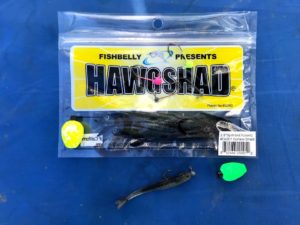
There are a couple reasons I choose the Hawg Shad. The 2.8″ size hits a sweet spot. All sorts of gamefish and panfish will not only hit it, they will engulf it. Fishbelly is known for using translucent and pearl colors that when combined with their supple plastic, just plain look alive in the water. Fish are going to get a good look at this slow, subtle presentation. The more natural it looks; the better.
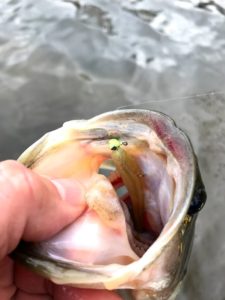
A 1/32 ounce jighead is my choice 90% of the time. A 1/16 ounce can come in handy in windy conditions for longer casting distance or a faster sink rate in fast current. A 1/64 ounce will give you the quietest splash and the slowest fall for the fussiest fish.
Use the smallest float that will support the lure and remain visible at a cast’s length. The less resistance felt by the fish – the longer they will hold the bait. Choose a float that can be adjusted easily. You will likely make depth adjustments throughout the day.
Start with an estimated distance between the lure and the float. If you consistently snag weeds, shorten that distance. If you aren’t getting any bites lengthen the distance until you start getting bites or start fouling on weeds. Shorten or lengthen as needed.
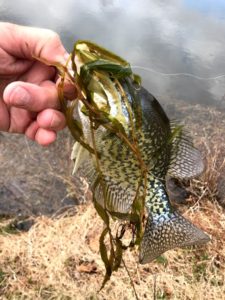
The Top Shot is a versatile rig. It catches largemouth, smallmouth, crappies, perch, large sunfish and lots more. Although it works great in open water, it is most at home in areas with submerged weeds or other “hook grabbing” cover. Submerged weedbed situations are what put the Top Shot in my arsenal.
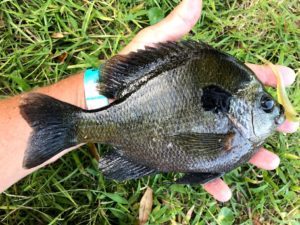
This rig allows me to present a realistic bait just above the weeds where fish tend to hide. It’s like a dropshot anchored from the top rather than from the bottom – hence the name. If you are a crappie fisherman you’ve probably fished some version of this rig already.
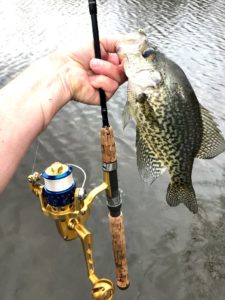
There is no wrong way to work a Top Shot, but some ways are better than others depending on the conditions. The splash down and initial fall will often produce 50% or more of your strikes. After the fall leave it alone for at least a few seconds before starting any retrieve. Experiment and let the fish tell you what they want.
Some days a gentle twitch of the float followed by a long pause is the best retrieve. If the fish are a little more aggressive, a soft pull of a foot or two followed by a pause will work better. When the fish are really amped up a “pop and pause” retrieve will draw in the predators with sound. A slow steady retrieve even works. Although I have found a steady retrieve to work for the occasional bass, it rarely fools a crappie or bluegill. The panfish seem to really like the pause.
It’s an easy rig to make. It’s an easy rig to fish. Most importantly, it’s easy to catch a lot of fish with a Top Shot.
